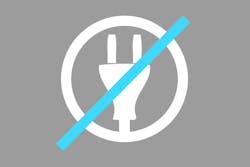It’s a commonly misused phrase, but “going green” these days is important for two key reasons—to help maintain a sustainable energy program and at the same time help your business to save money. There is of course an additional moral “feel-good” factor about trying to do the correct thing.
You could, of course, take the cynical view that it makes no difference what we do if thousands of coal-powered electricity-generating stations in China and India are pumping out tons of sulphurous carbon dioxide and our meager savings are but a fraction of the problem. Or you could argue that a reduction in fossil fuels is futile because it’s a finite source anyway, and it will definitely run out. So, whether it happens in the next 40, or the next 60 years makes no difference, as innovation will drive successive energy sources, however fast we consume energy. Arguably innovation will be quicker if there are fewer fossil fuels left.
Personally, I’m not one of those cynics, as I believe we all have a social responsibility to do our bit, and should persuade others to do the same. I’m going to try to discuss some of the lengths we go to here in the U.K. market in order achieve the two goals of saving energy and reducing business costs.
My view is that in many cases these go hand-in-hand. If we can look at ways to reduce our dependence on power of any kind, it should inevitably reduce cost and help the environment concurrently. In order to do this, it’s about taking both a systemic and systematic approach to how we operate our business.
From a systemic point of view (one which becomes an overall, or holistic assessment), I put my Bodyshop Revolution/Theory of Constraints hat on and look at the environment in which we work. By altering the workflow (to continuous) and reducing work-in-progress (WIP) by about 70 percent in the system, it means we can use a smaller footprint—about half of the normal workshop space a traditional body shop needs. This in itself significantly reduces fuel consumption in electricity generation, heating, lighting, etc.
Going one step further, there are several shops including one of our own industrial buildings that have a south-facing roof covered with photovoltaic cells that generate electric power. In many cases such as our own, the cells produce more power than we need, so the surplus is sold back to the main electricity grid. It goes without saying that good insulation, multi-glazed windows and good housekeeping also reduce energy levels.
Then, by going to a systematic approach (one where you’re picking off individual items), introducing new technology such as gas catalytic drying systems from companies like Robotica, you can enjoy booth consumption reduction by about 70 percent over a traditional bake system. There are lots of little things that we do as well, such as using the new Mirka CEROS sanding systems that use electricity rather than air. They save 90 percent on power consumption and localize vacuum extraction, negating the requirement for a high-kilowatt central system.
Catalytic hand lamps are another technology that we utilize. They cost significantly less to run than traditional infrared lamps and at the same time, they dry fillers and primers in just one minute, rather than the traditional 15 minutes. Because of strong legislation in Europe, we are all working with waterborne products, and have been for more than 10 years. Now, I’m not sure what the environmental issues are around manufacturing the stuff, but there are fewer VOC emissions, which has got to be good for the environment as well as our health.
Over here, we’re also pretty good at recycling, with many body shops segregating waste into different bins. In fact, it’s quite a nightmare getting waste removed from the site when we are dealing with solvents, oils, paper, plastics, steel, aluminium, and detailing waste, to name a few. Specialist waste companies have set themselves up just for our industry, and costs really vary, so you have to be very careful to shop about to get the best solution. Just to add another twist to the already regulated recycling and waste solutions are items such as electrical goods and computers. In Europe, we have something called WEEE (Waste Electrical and Electronic Equipment), which means that the manufacturers of electronic and electrical goods are responsible for safe disposal at the end of their natural life, and must bear the cost of the disposal.
Vehicle manufacturers have to go one step further. Not only do they have to focus on recycling of materials from vehicles, but they also have to comply with a three-year-old regulation called ELV, which stands for End of Life Vehicles. This is where, again, like WEEE, the manufacturer is responsible for the cost of dismantling and recycling of the vehicle at the end of its life. Clearly this additional cost is now built into the cost of new vehicles sold in the European member countries, although there are many arguments around when a vehicle is actually at the end of its life.
Whichever way you look at it, it makes sense to recycle, save energy and, of course, to reduce business costs. That’s the argument for doing “the right thing.”
Jon Parker is managing director of the Byteback Group, a U.K.-based information technology and services company aimed at advancing the collision repair industry. Parker can be reached at [email protected].
